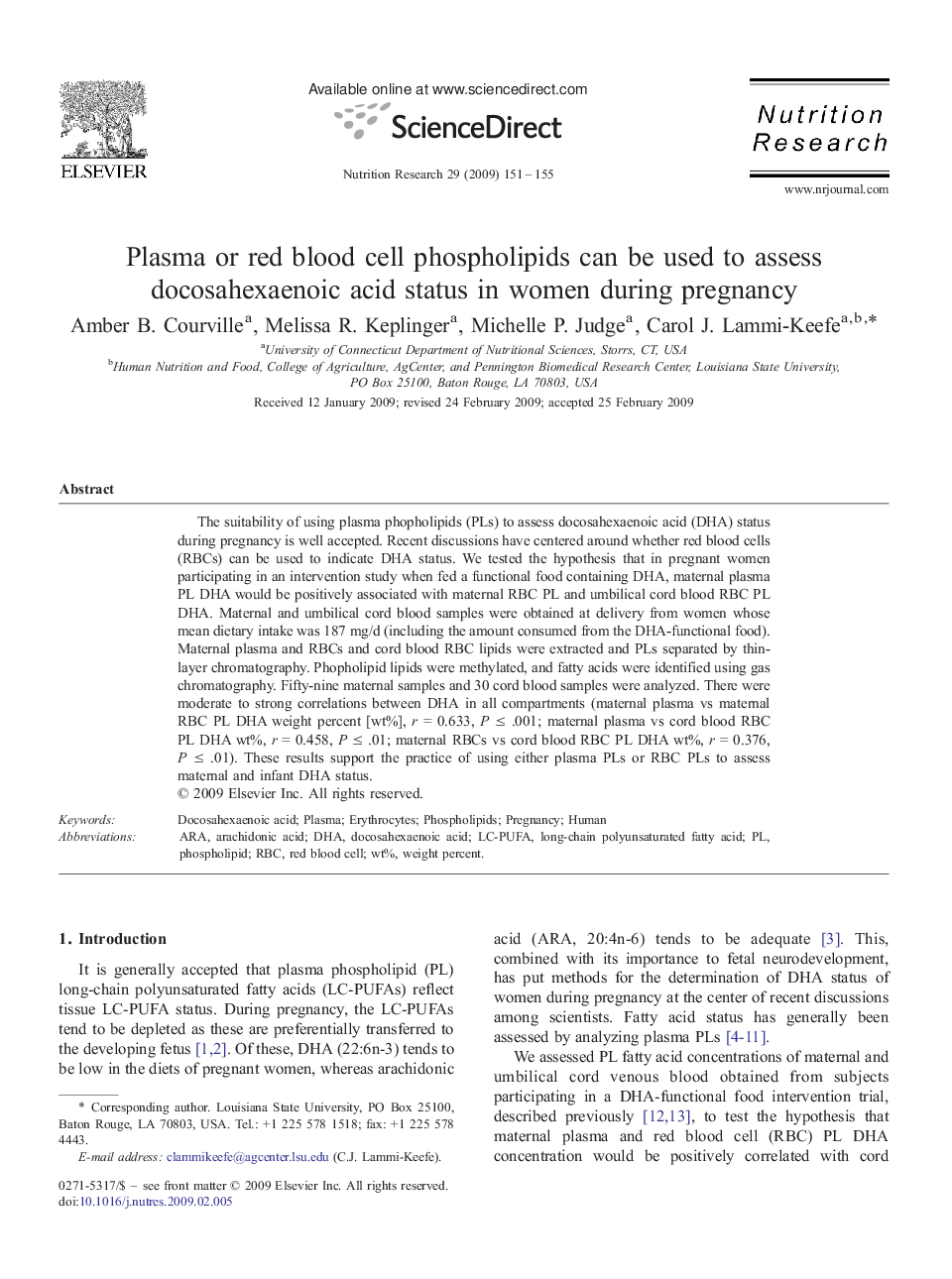| کد مقاله | کد نشریه | سال انتشار | مقاله انگلیسی | نسخه تمام متن |
|---|---|---|---|---|
| 2809389 | 1158041 | 2009 | 5 صفحه PDF | دانلود رایگان |

The suitability of using plasma phopholipids (PLs) to assess docosahexaenoic acid (DHA) status during pregnancy is well accepted. Recent discussions have centered around whether red blood cells (RBCs) can be used to indicate DHA status. We tested the hypothesis that in pregnant women participating in an intervention study when fed a functional food containing DHA, maternal plasma PL DHA would be positively associated with maternal RBC PL and umbilical cord blood RBC PL DHA. Maternal and umbilical cord blood samples were obtained at delivery from women whose mean dietary intake was 187 mg/d (including the amount consumed from the DHA-functional food). Maternal plasma and RBCs and cord blood RBC lipids were extracted and PLs separated by thin-layer chromatography. Phopholipid lipids were methylated, and fatty acids were identified using gas chromatography. Fifty-nine maternal samples and 30 cord blood samples were analyzed. There were moderate to strong correlations between DHA in all compartments (maternal plasma vs maternal RBC PL DHA weight percent [wt%], r = 0.633, P ≤ .001; maternal plasma vs cord blood RBC PL DHA wt%, r = 0.458, P ≤ .01; maternal RBCs vs cord blood RBC PL DHA wt%, r = 0.376, P ≤ .01). These results support the practice of using either plasma PLs or RBC PLs to assess maternal and infant DHA status.
Journal: Nutrition Research - Volume 29, Issue 3, March 2009, Pages 151–155